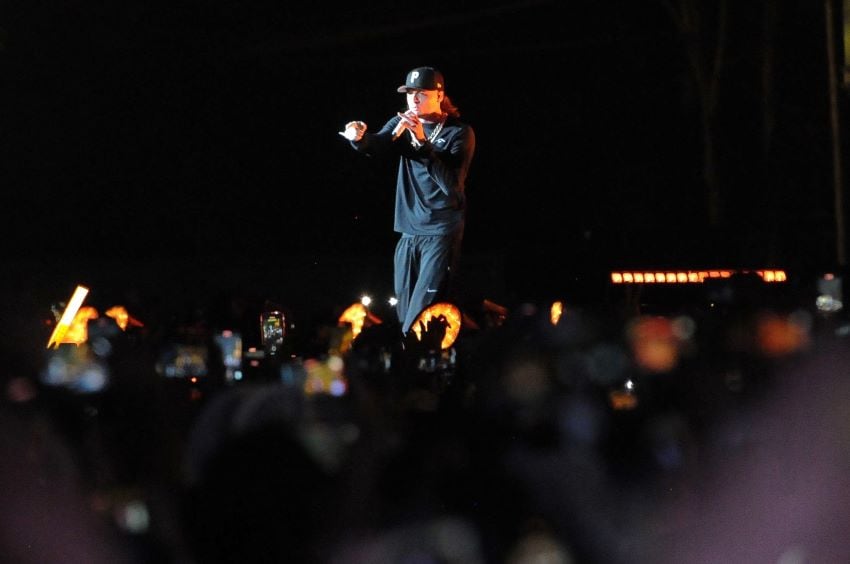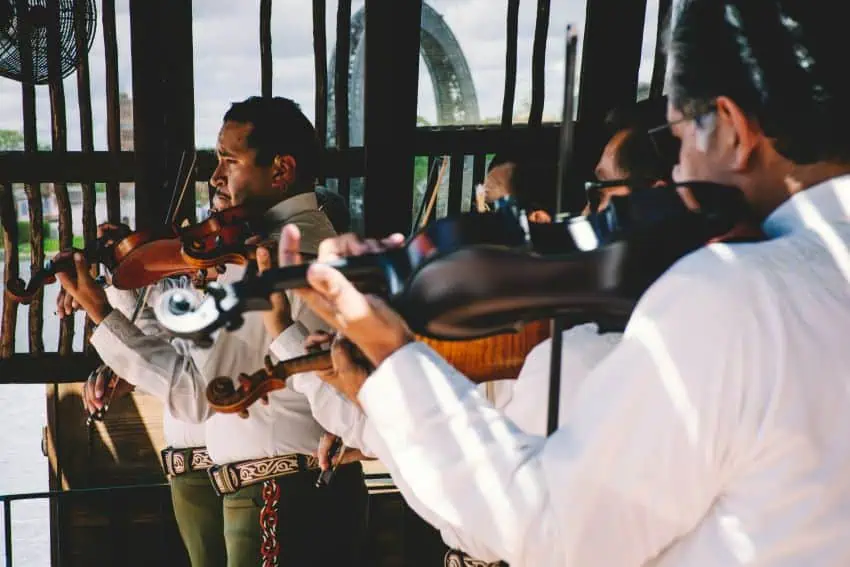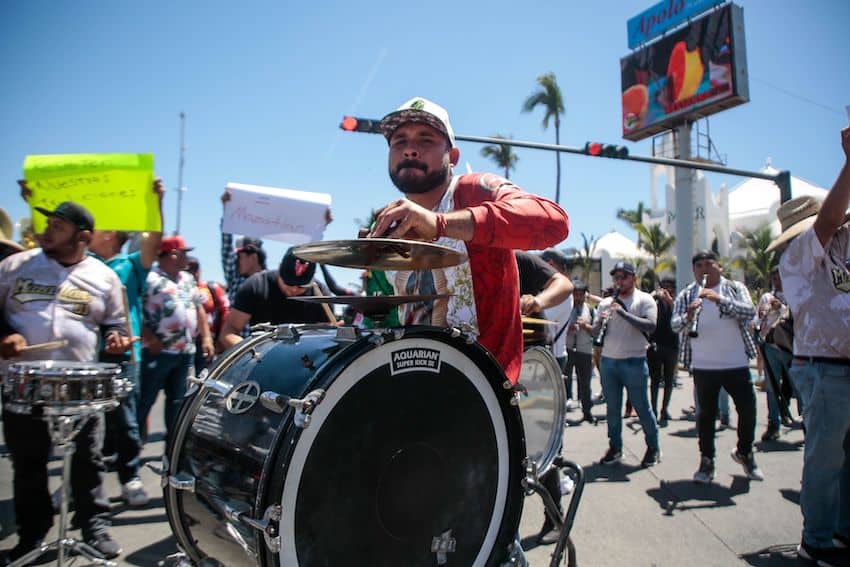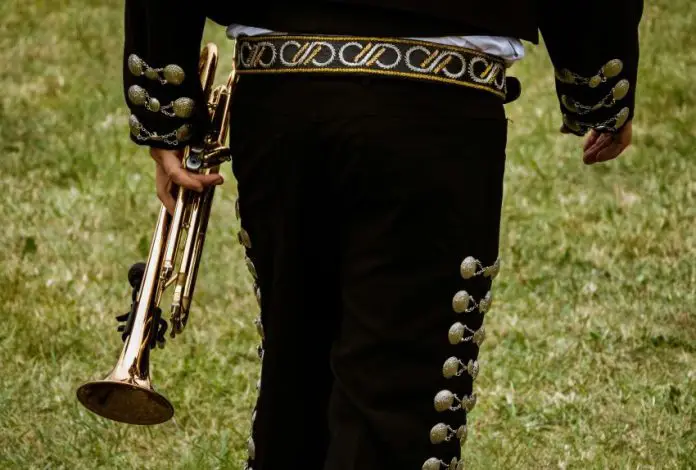Banda, norteño and mariachi are subgenres of Mexican regional music, a catch-all term that also includes genres as diverse as ranchera, sierreño, and grupero among other varieties. But what’s the difference between all of these genres?
In 2023, regional music dominated the Billboard charts thanks to artists like Peso Pluma, Fuerza Rígida, Carín León, Banda Ms and Edén Muñoz. Mixing banda, norteño and corrido sounds with reggaeton and hip-hop rhythms, these new artists have catapulted Mexican music to a global audience, mostly amongst Gen-Z consumers.

But long before these young artists emerged, mariachi music was already global and one of Mexico’s international symbols. Banda and norteño, on the other hand, had a big niche segment amongst specific communities in Mexico and in many Mexican communities in the United States.
If you often find yourself trying to identify if a song on the radio is mariachi, banda or norteño, fear no more. Here are the differences between these three musical genres and their fascinating origin — you might be surprised to find out where banda and norteño really come from!
Mariachi
Mariachi music is Mexico’s iconic sound. Combining brass and string instruments, it is passionate and vibrant, tuning into all types of emotions even if you don’t speak the language.
It originated in the late 19th century in central Jalisco. The towns of Cocula and Tecatitlán both lay claim to being the genre’s birthplace.

A typical mariachi ensemble consists of at least three musicians and a maximum of 14, (although the ideal number is seven). The ensemble’s instruments usually include guitar, guitarrón, vihuela, violin, harp, and trumpets, in addition to grandiose vocals. A defining feature of mariachi is the operatic vocal style of its lead singers.
In addition to the musical instruments, a mariachero — an individual musician — always shows up in folkloric attire inspired by the traje de charro, Mexico’s cowboy dress. The outfit includes fitted trousers adorned with buttons, a short jacket, an embroidered belt, boots, wide bowtie and a wide embroidered hat. The female version of the attire substitutes the trousers with a long skirt.
The varied repertoire of mariachis includes songs from different regions of Mexico, many of which were nurtured by stories during the Revolution. The lyrics touch on subjects like patriotism (think of “Cielito Lindo”), women (“Paloma Querida”), love (“Amor Eterno”) and the singer’s love of a good time (“Mariachi Loco”).
There are endless mariachi ensembles in Mexico, ranging from your typical groups at restaurants to those who perform alongside pop stars. However, the most renowned mariachi of all time is, without a doubt, the Mariachi Vargas de Tecatitlán.
Founded 126 years ago by Tecatitlán native Gaspar Vargas, this mariachi group has collaborated with legendary singers like Pedro Infante and Jorge Negrete — who inspired the character of Ernesto de la Cruz in Disney’s “Coco” — as well as contemporary superstar Luis Miguel.
Despite being a fixture in national culture and beloved by virtually every Mexican, mariachi is not as commercially popular as banda or norteño, two regional genres from the north of Mexico.
Banda Sinaloense
Banda music is more of an acquired taste for Mexicans and foreigners alike. However, it is one of Mexico’s most commercial and popular regional genres.

Originally from a small region in Mexico’s northwest, banda developed during the 18th and 19th centuries, influenced by German immigration to Sinaloa. The enclosed geography of the state of Sinaloa, which lies between the Pacific Ocean and the Sierra Madre Occidental, allowed various European rhythms to develop and take root in the area, particularly among rural populations.
Banda combines German and French instruments like the tuba, clarinet, trumpet, trombone and bass drum with the tambora, a Mexican percussion instrument. Its energetic sounds draw influence from German waltzes and polkas and regional Sinaloa rhythms.
For decades, banda ensembles were purely instrumental groups, just like their predecessors in Germany. It wasn’t until 1938 that a musician from El Recodo, near the coastal city of Mazatlán, incorporated emotive vocals.
That musician was Don Cruz Lizárraga, founder of Banda El Recodo or “the Mother of All Bandas,” as many fans dubbed the group. Just as with Mariachi Vargas, Banda El Recodo — which still performs to this day — is responsible for popularizing the genre.
In the 1990s, banda music surged in popularity as it began to incorporate elements of other Latin music genres such as cumbia and ranchera. In the U.S., it became a staple with Mexican-Americans, particularly in California and communities along the border.
Today, banda groups are large. They typically consist of 16 musicians playing the saxophone, tarola, bongos, timbales, trumpets, clarinets, tambora and their signature element, the German tuba.
Other bandas that helped spread the genre include La Arrolladora Banda El Limón and Banda MS.
Norteño
Many confuse norteño and banda music. Despite sharing similar origins, they’re actually totally different genres.
Norteño developed in Mexico’s northeast, in the city of Monterrey, Nuevo León. It draws inspiration from German rhythms typical of Munich, characterized by the accordion.
In the 90s, Grupo Límite disrupted traditional norteño and banda ensembles by incorporating a lead female vocalist, Alicia Villareal. Thanks to this innovation and the group’s catchy songs like “Y Te Aprovechas,” the genre permeated other audiences across the country.
Unlike banda groups, norteño ensembles are typically made up of five or six musicians. They incorporate guitar, accordion, bass, snare drum, saxophone and percussion. Nowadays, many of the most famous norteño ensembles include Mexican musicians born in U.S. communities along the border with Mexico. One such group is Intocable.
Christian Nodal is currently Mexico’s most famous norteño exponent. He’s mainly known for popularizing mariacheño, a subgenre that combines mariachi with norteño. Other emerging subgenres include sirreño, known for its origins in the mountains of the north.
The lyrics of both norteño music and banda tap into themes of love, heartbreak, nostalgia, alcohol, drugs, politics and urban life.
Gabriela Solis is a Mexican lawyer turned full-time writer. She was born and raised in Guadalajara and covers business, culture, lifestyle and travel for Mexico News Daily. You can follow her lifestyle blog Dunas y Palmeras.
